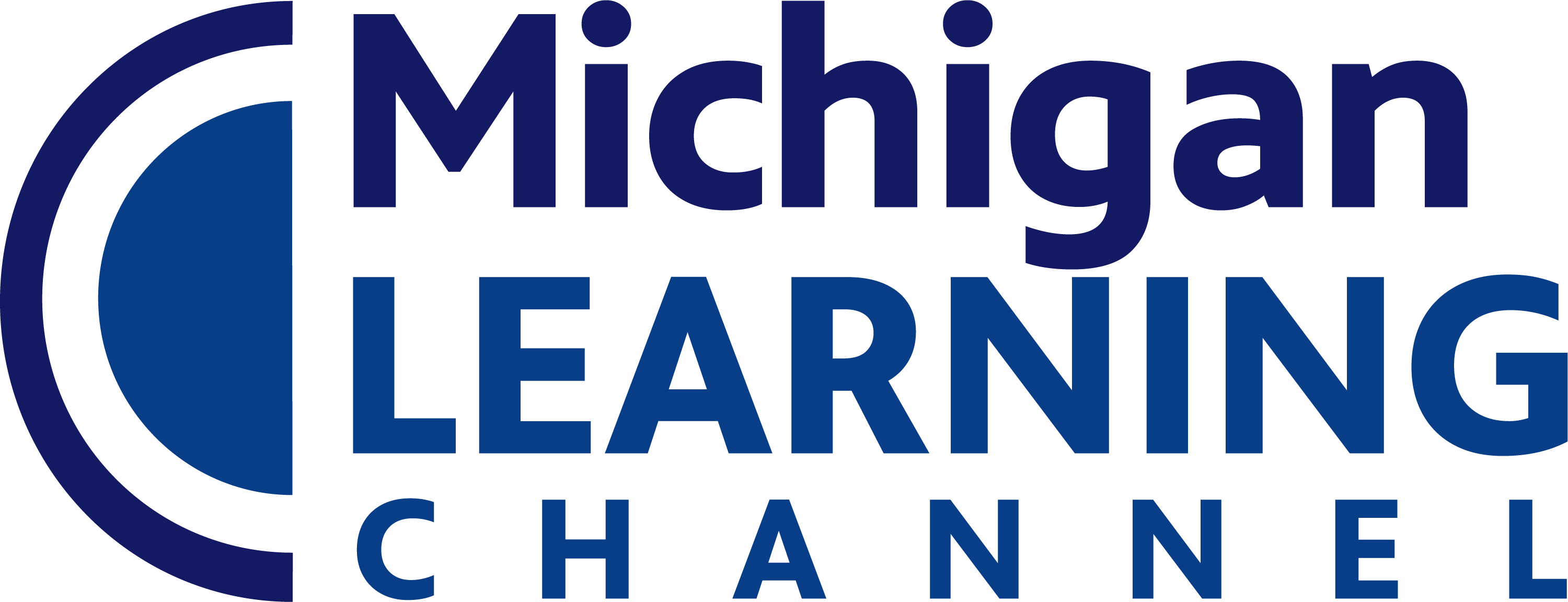Subjects
Shows
Identify key steps in a text’s description of a process related to history/social studies (e.g., how a bill becomes law, [...]
Determine the meaning of words and phrases as they are used in a text, including vocabulary specific to domains related [...]
Describe how a text presents information (e.g., sequentially, comparatively, causally).
Identify aspects of a text that reveal an author’s point of view or purpose (e.g., loaded language, inclusion or avoidance [...]
Integrate visual information (e.g., in charts, graphs, photographs, videos, or maps) with other information in print and digital texts.
Distinguish among fact, opinion, and reasoned judgment in a text.
Analyze the relationship between a primary and secondary source on the same topic.
Cite specific textual evidence to support analysis of science and technical texts.
By the end of grade 8, read and comprehend science/technical texts in the grades 6–8 text complexity band independently and [...]
Determine the central ideas or conclusions of a text; provide an accurate summary of the text distinct from prior knowledge [...]
Follow precisely a multistep procedure when carrying out experiments, taking measurements, or performing technical tasks.
Determine the meaning of symbols, key terms, and other domain-specific words and phrases as they are used in a specific [...]
Analyze the structure an author uses to organize a text, including how the major sections contribute to the whole and [...]
Analyze the author’s purpose in providing an explanation, describing a procedure, or discussing an experiment in a text.
Integrate quantitative or technical information expressed in words in a text with a version of that information expressed visually (e.g., [...]
Distinguish among facts, reasoned judgment based on research findings, and speculation in a text.
Give examples of linear equations in one variable with one solution, infinitely many solutions, or no solutions. Show which of [...]
Solve linear equations with rational number coefficients, including equations whose solutions require expanding expressions using the distributive property and collecting [...]
Understand that solutions to a system of two linear equations in two variables correspond to points of intersection of their [...]
Solve systems of two linear equations in two variables algebraically, and estimate solutions by graphing the equations. Solve simple cases [...]
Solve real-world and mathematical problems leading to two linear equations in two variables. For example, given coordinates for two pairs [...]
Construct and interpret scatter plots for bivariate measurement data to investigate patterns of association between two quantities. Describe patterns such [...]
Know that straight lines are widely used to model relationships between two quantitative variables. For scatter plots that suggest a [...]
Use the equation of a linear model to solve problems in the context of bivariate measurement data, interpreting the slope [...]
Understand that patterns of association can also be seen in bivariate categorical data by displaying frequencies and relative frequencies in [...]
Understand that a function is a rule that assigns to each input exactly one output. The graph of a function [...]
Compare properties of two functions each represented in a different way (algebraically, graphically, numerically in tables, or by verbal descriptions). [...]
Interpret the equation y = mx + b as defining a linear function, whose graph is a straight line; give [...]
Construct a function to model a linear relationship between two quantities. Determine the rate of change and initial value of [...]
Describe qualitatively the functional relationship between two quantities by analyzing a graph (e.g., where the function is increasing or decreasing, [...]
Verify experimentally the properties of rotations, reflections, and translations:
Lines are taken to lines, and line segments to line segments of the same length.
Understand that a two-dimensional figure is congruent to another if the second can be obtained from the first by a [...]
Describe the effect of dilations, translations, rotations and reflections on two-dimensional figures using coordinates.
Understand that a two-dimensional figure is similar to another if the second can be obtained from the first by a [...]
Use informal arguments to establish facts about the angle sum and exterior angle of triangles, about the angles created when [...]
Apply the Pythagorean Theorem to determine unknown side lengths in right triangles in real-world and mathematical problems in two and [...]
Apply the Pythagorean Theorem to find the distance between two points in a coordinate system.
Know the formulas for the volume of cones, cylinders, and spheres and use them to solve real-world and mathematical problems.
Know that numbers that are not rational are called irrational. Understand informally that every number has a decimal expansion; for [...]
Use rational approximations of irrational numbers to compare the size of irrational numbers, locate them approximately on a number line [...]
Know and apply the properties of integer exponents to generate equivalent numerical expressions. For example, 3^2 × 3^(–5) = 3^(–3) [...]
Use square root and cube root symbols to represent solutions to equations of the form x^2 = p and x^3 [...]
Use numbers expressed in the form of a single digit times an integer power of 10 to estimate very large [...]
Perform operations with numbers expressed in scientific notation, including problems where both decimal and scientific notation are used. Use scientific [...]
Subjects
Shows
Identify key steps in a text’s description of a process related to history/social studies (e.g., how a bill becomes law, [...]
Determine the meaning of words and phrases as they are used in a text, including vocabulary specific to domains related [...]
Describe how a text presents information (e.g., sequentially, comparatively, causally).
Identify aspects of a text that reveal an author’s point of view or purpose (e.g., loaded language, inclusion or avoidance [...]
Integrate visual information (e.g., in charts, graphs, photographs, videos, or maps) with other information in print and digital texts.
Distinguish among fact, opinion, and reasoned judgment in a text.
Analyze the relationship between a primary and secondary source on the same topic.
Cite specific textual evidence to support analysis of science and technical texts.
By the end of grade 8, read and comprehend science/technical texts in the grades 6–8 text complexity band independently and [...]
Determine the central ideas or conclusions of a text; provide an accurate summary of the text distinct from prior knowledge [...]
Follow precisely a multistep procedure when carrying out experiments, taking measurements, or performing technical tasks.
Determine the meaning of symbols, key terms, and other domain-specific words and phrases as they are used in a specific [...]
Analyze the structure an author uses to organize a text, including how the major sections contribute to the whole and [...]
Analyze the author’s purpose in providing an explanation, describing a procedure, or discussing an experiment in a text.
Integrate quantitative or technical information expressed in words in a text with a version of that information expressed visually (e.g., [...]
Distinguish among facts, reasoned judgment based on research findings, and speculation in a text.
Give examples of linear equations in one variable with one solution, infinitely many solutions, or no solutions. Show which of [...]
Solve linear equations with rational number coefficients, including equations whose solutions require expanding expressions using the distributive property and collecting [...]
Understand that solutions to a system of two linear equations in two variables correspond to points of intersection of their [...]
Solve systems of two linear equations in two variables algebraically, and estimate solutions by graphing the equations. Solve simple cases [...]
Solve real-world and mathematical problems leading to two linear equations in two variables. For example, given coordinates for two pairs [...]
Construct and interpret scatter plots for bivariate measurement data to investigate patterns of association between two quantities. Describe patterns such [...]
Know that straight lines are widely used to model relationships between two quantitative variables. For scatter plots that suggest a [...]
Use the equation of a linear model to solve problems in the context of bivariate measurement data, interpreting the slope [...]
Understand that patterns of association can also be seen in bivariate categorical data by displaying frequencies and relative frequencies in [...]
Understand that a function is a rule that assigns to each input exactly one output. The graph of a function [...]
Compare properties of two functions each represented in a different way (algebraically, graphically, numerically in tables, or by verbal descriptions). [...]
Interpret the equation y = mx + b as defining a linear function, whose graph is a straight line; give [...]
Construct a function to model a linear relationship between two quantities. Determine the rate of change and initial value of [...]
Describe qualitatively the functional relationship between two quantities by analyzing a graph (e.g., where the function is increasing or decreasing, [...]
Verify experimentally the properties of rotations, reflections, and translations:
Lines are taken to lines, and line segments to line segments of the same length.
Understand that a two-dimensional figure is congruent to another if the second can be obtained from the first by a [...]
Describe the effect of dilations, translations, rotations and reflections on two-dimensional figures using coordinates.
Understand that a two-dimensional figure is similar to another if the second can be obtained from the first by a [...]
Use informal arguments to establish facts about the angle sum and exterior angle of triangles, about the angles created when [...]
Apply the Pythagorean Theorem to determine unknown side lengths in right triangles in real-world and mathematical problems in two and [...]
Apply the Pythagorean Theorem to find the distance between two points in a coordinate system.
Know the formulas for the volume of cones, cylinders, and spheres and use them to solve real-world and mathematical problems.
Know that numbers that are not rational are called irrational. Understand informally that every number has a decimal expansion; for [...]
Use rational approximations of irrational numbers to compare the size of irrational numbers, locate them approximately on a number line [...]
Know and apply the properties of integer exponents to generate equivalent numerical expressions. For example, 3^2 × 3^(–5) = 3^(–3) [...]
Use square root and cube root symbols to represent solutions to equations of the form x^2 = p and x^3 [...]
Use numbers expressed in the form of a single digit times an integer power of 10 to estimate very large [...]
Perform operations with numbers expressed in scientific notation, including problems where both decimal and scientific notation are used. Use scientific [...]


